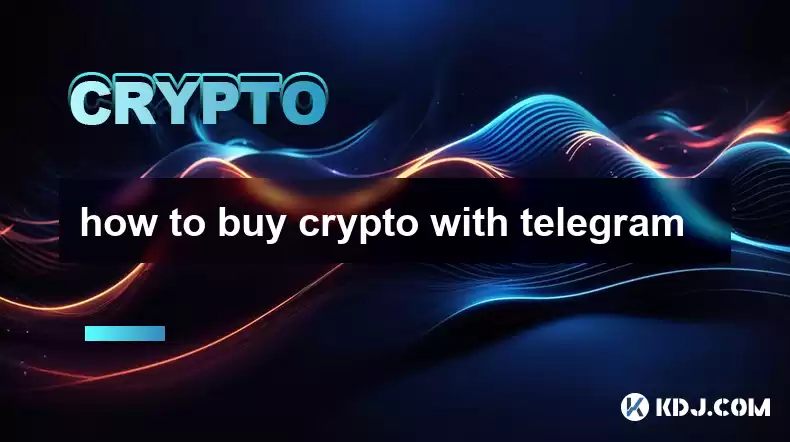-
 Bitcoin
Bitcoin $117800
0.49% -
 Ethereum
Ethereum $4432
0.55% -
 XRP
XRP $3.106
1.07% -
 Tether USDt
Tether USDt $1.001
0.01% -
 BNB
BNB $835.8
1.74% -
 Solana
Solana $189.1
2.72% -
 USDC
USDC $0.9999
-0.01% -
 Dogecoin
Dogecoin $0.2302
3.65% -
 TRON
TRON $0.3485
-0.69% -
 Cardano
Cardano $0.9212
-0.91% -
 Hyperliquid
Hyperliquid $46.97
1.45% -
 Chainlink
Chainlink $22.77
5.61% -
 Stellar
Stellar $0.4284
0.82% -
 Sui
Sui $3.766
2.82% -
 Bitcoin Cash
Bitcoin Cash $583.5
-0.82% -
 Ethena USDe
Ethena USDe $1.001
0.03% -
 Hedera
Hedera $0.2512
2.78% -
 Avalanche
Avalanche $24.18
2.27% -
 Litecoin
Litecoin $120.2
2.10% -
 Toncoin
Toncoin $3.450
1.96% -
 UNUS SED LEO
UNUS SED LEO $9.412
-0.92% -
 Shiba Inu
Shiba Inu $0.00001298
2.35% -
 Uniswap
Uniswap $10.99
3.75% -
 Polkadot
Polkadot $3.962
3.09% -
 Dai
Dai $1.000
0.00% -
 Bitget Token
Bitget Token $4.643
1.38% -
 Cronos
Cronos $0.1511
-0.08% -
 Ethena
Ethena $0.7246
3.18% -
 Monero
Monero $254.9
7.90% -
 Pepe
Pepe $0.00001100
3.32%
how to buy crypto with telegram
Verify a Telegram bot's legitimacy by examining its profile, visiting its website, and reviewing its social media presence to confirm its authenticity and reputation.
Feb 03, 2025 at 05:48 am

How to Buy Crypto with Telegram
Key Points:
- Choose a Reputable Telegram Bot: Look for bots with a strong track record, positive reviews, and a secure platform.
- Verify the Bot's Legitimacy: Check the bot's profile, website, and social media presence to confirm its authenticity.
- Set Up a Wallet: Create a crypto wallet, either hardware or software, to store your purchased crypto.
- Authorize the Bot: Grant the bot access to your wallet and follow the bot's instructions to initiate purchases.
- Select the Crypto and Amount: Choose the cryptocurrency you want to buy and specify the amount.
- Confirm the Transaction: Review the transaction details before authorizing it.
- Receive the Crypto: Once the transaction is complete, the purchased crypto will be deposited into your wallet.
Step 1: Choose a Reputable Telegram Bot
Telegram offers a wide range of bots that facilitate crypto purchases. Choose a bot with a proven reputation, positive user reviews, and a secure platform. Consider factors such as:
- Bot's Trustworthiness: Check the bot's age, number of users, and reputation among crypto enthusiasts.
- Security Measures: Verify if the bot implements SSL encryption, two-factor authentication, and other security measures.
- Support Channels: Ensure the bot provides responsive support through Telegram, email, or social media platforms.
Step 2: Verify the Bot's Legitimacy
To confirm the authenticity of the Telegram bot, take the following steps:
- Examine the Bot's Profile: Check the bot's Telegram account, including its profile picture, bio, and website link. Look for signs of impersonation or suspicious activity.
- Visit the Bot's Website: If the bot has a website, visit it to assess its legitimacy, user testimonials, and transparency.
- Review Social Media Presence: Check the bot's social media profiles on Twitter, Facebook, or LinkedIn to verify its activity and community engagement.
Step 3: Set Up a Wallet
To store your purchased crypto securely, you'll need a crypto wallet. Options include:
Hardware Wallets: Physical devices that store crypto offline, providing the highest level of security.
Software Wallets: Applications installed on your computer or mobile device that offer convenience and access to various cryptocurrencies.
Step 4: Authorize the Bot
To buy crypto using a Telegram bot, authorize it to connect to your wallet. Follow the bot's instructions to complete the authorization process securely.
Step 5: Select the Crypto and Amount
Choose the cryptocurrency you want to buy from the options offered by the bot. Specify the amount you wish to purchase, considering the available balance in your wallet.
Step 6: Confirm the Transaction
Before confirming the transaction, carefully review the transaction details:
- Cryptocurrency Purchased: Verify the type of cryptocurrency you're buying.
- Amount of Crypto: Confirm the number of units or amount you're purchasing.
- Total Cost: Ensure the transaction amount matches your intended purchase amount.
Step 7: Receive the Crypto
Once the transaction is confirmed, the purchased crypto will be transferred to your connected wallet. Check your wallet balance to verify the receipt of the crypto.
Frequently Asked Questions
Q: Is it safe to buy crypto with a Telegram bot?
A: Using a reputable Telegram bot can be a convenient and secure method to purchase crypto. However, it's crucial to verify the bot's legitimacy and implement proper security measures to protect your assets.
Q: Which Telegram bots are best for buying crypto?
A: Top-rated Telegram bots for crypto purchases include:
- ChangeBot: Known for ease of use, low fees, and support for multiple cryptocurrencies.
- Binance: Offers a wide range of crypto assets and features advanced trading tools.
- OKX: Features a user-friendly interface, high liquidity, and competitive pricing.
Q: What are the fees involved in buying crypto with Telegram?
A: Fees vary depending on the Telegram bot used and the cryptocurrency being purchased. Typically, bots charge a transaction fee ranging from 0.5% to 2% of the purchase amount.
Q: How long does it take to receive my purchased crypto?
A: Transaction processing times depend on the blockchain network of the purchased cryptocurrency and the bot's processing capabilities. In general, it can take a few minutes to several hours to receive your crypto.
Disclaimer:info@kdj.com
The information provided is not trading advice. kdj.com does not assume any responsibility for any investments made based on the information provided in this article. Cryptocurrencies are highly volatile and it is highly recommended that you invest with caution after thorough research!
If you believe that the content used on this website infringes your copyright, please contact us immediately (info@kdj.com) and we will delete it promptly.
- Kazakhstan's Crypto Leap: Bitcoin ETF and Central Asia's Digital Finance Future
- 2025-08-13 12:45:19
- BlockDAG Presale Blazes Past $371M: Fundraising Frenzy Fuels Crypto Sensation
- 2025-08-13 13:05:21
- Meme Coins: Chasing the 2025 Surge – Which Will Moonshot?
- 2025-08-13 10:25:23
- Bitcoin's Wild Ride: Rally, Pullback, and What's Next
- 2025-08-13 10:25:23
- Bitcoin, Bitmax, and Institutional Demand: A New Era of Crypto Investment
- 2025-08-13 10:45:12
- Solana, ROAM, and Airdrops: What's the Buzz in 2025?
- 2025-08-13 11:35:13
Related knowledge

What is Ethereum’s Slashing mechanism and how to punish malicious behavior?
Feb 20,2025 at 03:08am
Key PointsOverview of slashingDifferent types of slashing in EthereumIncentives and consequences of slashingIdentifying and reporting slashed validato...

What is the verifier node of Ethereum and how to become a verifier?
Feb 19,2025 at 06:00pm
The Verifier Node of Ethereum: A Comprehensive GuideKey Points:What is a Verifier Node?How to Become a Verifier NodeResponsibilities and Rewards of a ...

What is Ethereum’s staking, and how to participate and earn money?
Feb 19,2025 at 04:37pm
Key Points:Understanding Ethereum's Staking MechanismSteps to Participate in StakingBenefits and Rewards of StakingSecurity and Risk ConsiderationsTec...

What is Ethereum’s DAO (Decentralized Autonomous Organization) and how does it work?
Feb 20,2025 at 03:12am
Key PointsDefinition and Structure of a DAOGovernance and Decision-Making in DAOsBenefits and Use Cases of DAOsChallenges and Limitations of DAOsWhat ...

What is Ethereum's multi-signature wallet and how to improve security?
Feb 20,2025 at 02:18pm
Key Points:Understanding the Concept of a Multi-Signature WalletBenefits and Drawbacks of Multisig WalletsRequirements for Setting Up a Multisig Walle...

What is Ethereum's oracle and how to provide data for smart contracts?
Feb 21,2025 at 01:30am
Key Points:Understanding the concept of oracles in EthereumExploring different types of oraclesDetailed guide on how to provide data for smart contrac...

What is Ethereum’s Slashing mechanism and how to punish malicious behavior?
Feb 20,2025 at 03:08am
Key PointsOverview of slashingDifferent types of slashing in EthereumIncentives and consequences of slashingIdentifying and reporting slashed validato...

What is the verifier node of Ethereum and how to become a verifier?
Feb 19,2025 at 06:00pm
The Verifier Node of Ethereum: A Comprehensive GuideKey Points:What is a Verifier Node?How to Become a Verifier NodeResponsibilities and Rewards of a ...

What is Ethereum’s staking, and how to participate and earn money?
Feb 19,2025 at 04:37pm
Key Points:Understanding Ethereum's Staking MechanismSteps to Participate in StakingBenefits and Rewards of StakingSecurity and Risk ConsiderationsTec...

What is Ethereum’s DAO (Decentralized Autonomous Organization) and how does it work?
Feb 20,2025 at 03:12am
Key PointsDefinition and Structure of a DAOGovernance and Decision-Making in DAOsBenefits and Use Cases of DAOsChallenges and Limitations of DAOsWhat ...

What is Ethereum's multi-signature wallet and how to improve security?
Feb 20,2025 at 02:18pm
Key Points:Understanding the Concept of a Multi-Signature WalletBenefits and Drawbacks of Multisig WalletsRequirements for Setting Up a Multisig Walle...

What is Ethereum's oracle and how to provide data for smart contracts?
Feb 21,2025 at 01:30am
Key Points:Understanding the concept of oracles in EthereumExploring different types of oraclesDetailed guide on how to provide data for smart contrac...
See all articles

























































































